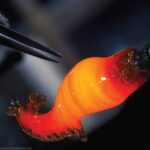I am often asked by medical students, resident physicians and—especially—patients, what is rheumatology? When students ask me why I chose to be a rheumatologist, I answer that I have never been in love with pathologies, such as rheumatoid arthritis, spondyloarthritis, gout, osteoporosis, systemic lupus erythematosus or vasculitis. In fact, I chose rheumatology because I love internal medicine. Thinking about it, I started to question whether adult rheumatology is another face of internal medicine—if it’s something more than just a subspecialty.
In conversations with other rheumatologists, I notice that we find it difficult to express what our subspecialty actually means. Many people reduce the definition of rheumatology to a description of our routines, but what we do does not define us. For example, saying rheumatologists take care of autoimmune diseases is not essentially our role; after all, we deal with a wide range of pathologies that don’t necessarily include autoimmunity (e.g., osteoporosis, osteoarthritis, gout). Likewise, numerous other subspecialties deal with autoimmune diseases that rheumatologists don’t manage (e.g., Hashimoto’s thyroiditis, multiple sclerosis, pemphigus).
Alternatively, some may suggest we deal with diseases that afflict the musculoskeletal system. Once again, this does not define us; many collagen vascular diseases, as well as IgG4-related disease, don’t necessarily have musculoskeletal manifestations.
In search of the answer to what is, in fact, the essence of rheumatology, I went back to the etymology of the word rheumatism. In the Encyclopedia Britannica, rheumatism is described as “any of several disorders that have in common inflammation of the connective tissues, especially the muscles, joints, and associated structures.”¹ In fact, rheuma originates from ancient Greek and means “to flow,” a direct reference to the theory of the four fluids (i.e., humors) applied to medicine by Hippocrates, Galen and others. This theory suggests that diseases result from an imbalance of humors.
If we consider that the theory of the four fluids (i.e., blood, phlegm, yellow bile, black bile) represented human physiology and that rheuma would imply imbalance among these fluids—mainly, but not restricted to, phlegm—I infer the rheumatologist is the “specialist in the whole body.” Knowing that connective tissue is the most abundant tissue type in our body and that its main function is to support and connect body parts, we gain insight into the definition of rheumatism given by the Encyclopedia Britannica and why we are considered experts in “connective tissue inflammation.” Yet I still think it’s an incomplete definition because it leaves out the three other classically defined basic tissue groups (i.e., muscles, epithelium and nerves), all of which are often affected by rheumatic disease.

